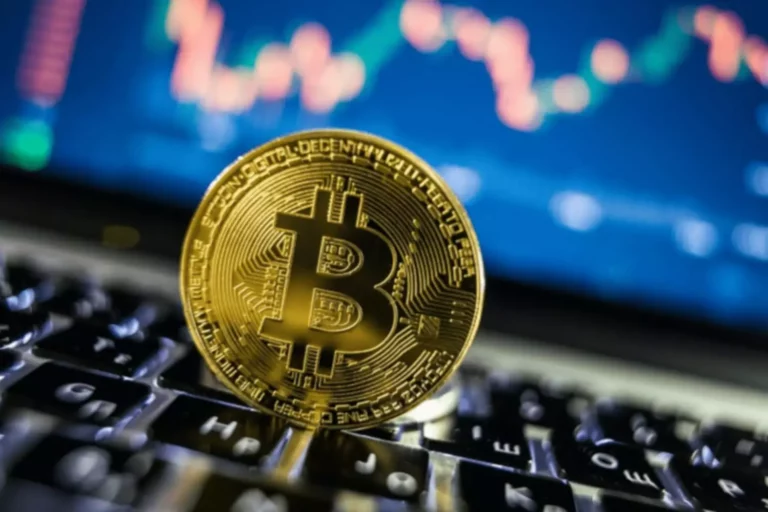Adam Hayes, Ph.D., CFA, is a financial writer with 15+ years Wall Street experience as a derivatives trader. Besides his extensive derivative trading expertise, Adam is an expert in economics and behavioral finance. Adam received his master’s in economics from The New School for Social Research and his Ph.D. from the University of Wisconsin-Madison in sociology. He is a CFA charterholder as well as holding FINRA Series 7, 55 & 63 licenses. He currently researches and teaches economic sociology and the social studies of finance at the Hebrew University in Jerusalem.
- Every liquidity provider that is interested in adding to the pool subsequently maintains the initial ratio set for the supply of tokens to the pool.
- Moreover, in addition to sharing revenue with the liquidity providers, DeFi platforms also airdrop their in-house tokens.
- In exchange for providing liquidity, Uniswap would give LP Tokens (Liquidity Provider Tokens) to the Liquidity Provider.
- Holders of PoS tokens cam elect to lock up some of their funds to help validate transactions on the network.
- A liquidity protocol (think Uniswap, Bancor, or Balancer) acts as an Automated Market Maker (AMM) allowing users to access a liquid market at any given moment.
- In the case of the borrower also, the transaction is between the borrower and the smart contract.
You can try and start with Uniswap and then explore the rest of the platform. From the borrower’s perspective, a borrower would deposit collateral to receive a cToken and receive a loan against it. As you can see in the above image, the borrower would deposit ETH as collateral and receive DAI as a loan and cETH. In the case of the borrower also, the transaction is between the borrower and the smart contract. It’s important for investors to be aware of the risks and take appropriate measures to protect their investments. Divergence losses are also called “impermanent losses” because losses may be nullified once token prices return to levels when they were staked.
Liquidity Pool Comparisons
To stay abreast of the dynamic financial landscape, consider scheduling bi-annual reviews. Utilize these moments to reassess your risk tolerance, which can change due to age, career progression, and family expansion. Once risks are quantified, they must be weighed against your personal risk tolerance. Defining a clear risk threshold — the level beyond which a risk becomes intolerable — aids in crafting an actionable response. Tools like Risk Matrices can be handy, providing a visual representation of where each risk falls and guiding both strategic and immediate actions.
LPs add an equal value of trading pairs into the pool and earn a fraction of trading fees or crypto rewards. Providing liquidity produces tokens to crypto liquidity pools, which are then locked up in smart contracts and utilized by DEX traders. Add tokens to your wallet, connect it to a liquidity pool platform, deposit a percentage of your investment in a trading pair, and choose a lockup time to become an LP. You receive tokens based on your trading pair and platform during the lockup period and earn a percentage of transaction fees.
Understanding Dark Pool Liquidity
In addition, the concern of liquidity also presents obstacles in the execution of the trade. Market Makers find a perfect window in this case and ensure trading by placing commitments for purchasing or selling a specific asset. In exchange for providing liquidity, Uniswap would give LP Tokens (Liquidity Provider Tokens) to the Liquidity Provider. The term liquidity provider is a generic term and can be used differently on a different platform.
But DEX exchanges have introduced a new way for crypto holders to generate income by adding their cryptocurrencies to the general pool. Dark pool liquidity is the trading volume created by institutional orders executed on private exchanges; information about these transactions is mostly unavailable to the public. The bulk of dark pool liquidity is created by block trades facilitated away from the central stock market exchanges and conducted by institutional investors (primarily investment banks). To ensure that the pool is constantly liquid, DeFi platforms use different pool pricing algorithms, also known as automated market makers (AMMs), to automatically adjust pricing. Executing trades on AMMs is typically peer-to-contract based as you are trading against the liquidity in the pool rather than a counterparty.
All your finances.
The order book is like an electronic record of buy and sell orders for specific security, cryptocurrency token/coin, or financial instrument organized by price level. Tokens being pooled can be either ERC-20 tokens(For Ethereum based Dex) or BEP-20 for platforms like PancakeSwap, BakerySwap, and BurgerSwap, etc. In addition to trading volume, other factors such as the width of bid-ask spreads, market depth, and order book data can provide further insight into the liquidity of a stock.

A single liquidity pool typically holds 2 tokens and each pool creates a new market for that particular pair of tokens. DAI/ETH is a good example of a popular liquidity pool on a DEX like Uniswap. The liquidity pools that we just described are used by Uniswap and they are the most basic forms of liquidity pools. Other projects iterated on this concept and came up with a few interesting ideas.
Credit Risk
On the other hand, SushiSwap basically serves as a virtual clone of Uniswap. With so many promising applications of the liquidity pool concept, it is reasonable to wonder about their other promising uses. Since liquidity pooling is quite a simple concept, you can use it in many other ways. The smart contracts that underlay these platforms sometimes have exploitable bugs in them. Because of the large profit opportunity, these protocols have become a prime target for hackers.

If you’ve made it this far, congratulations– you’ve just learned about one of the most important components of decentralized finance. Since DEXes don’t have a centralized order book of people who want to buy or sell crypto, they have a liquidity problem. This is obviously a gross oversimplification, but the vibe is similar to peer-to-contract trading in decentralized exchange. When a trader exchanges his tokens on Uniswap, he will give a fee to Uniswap, which is then distributed to the Liquidity Pool.
Well-known Liquidity Mining Providers
Several pools also provide tokens for staking to earn the platform’s native token. A liquidity pool is a collection of assets in a big digital pile that facilitates automated and permissionless transactions on DeFi platforms. The funds are locked in pieces of self-executing codes called smart contracts. DeFi ecosystems liquidity pool definition that utilize liquidity pools include decentralized exchanges (DEXs), yield farms, and crypto lending platforms, among others. Liquidity pools are the backbone of many decentralized exchanges (DEX), such as Uniswap. Users called liquidity providers (LP) add an equal value of two tokens in a pool to create a market.
WTF Is Anoma? Part 2: WTF Are Intent-Based Apps? – Delphi Digital
WTF Is Anoma? Part 2: WTF Are Intent-Based Apps?.
Posted: Tue, 26 Sep 2023 20:10:15 GMT [source]

